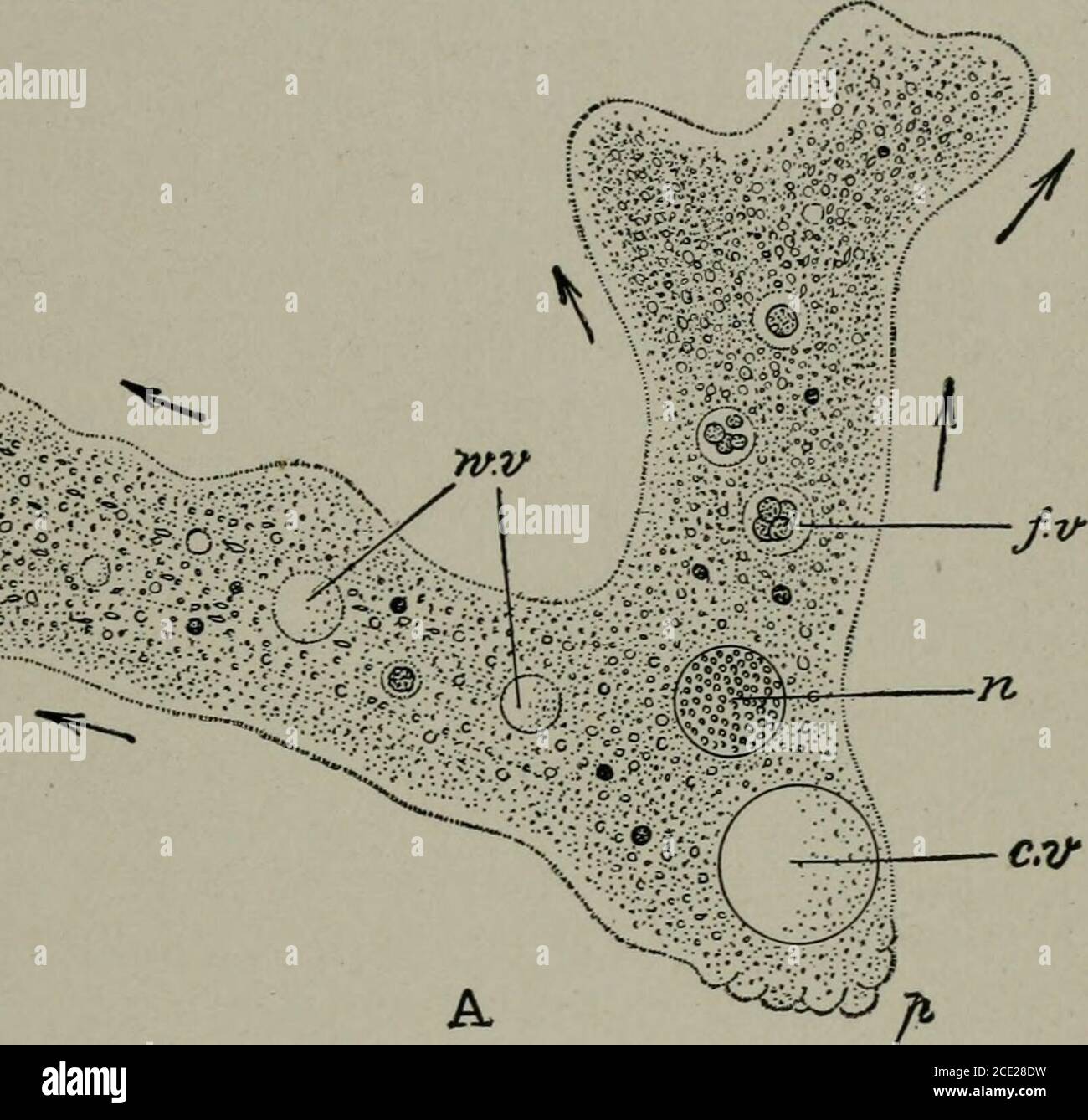. Biology . , a group comprising some of the mostperfect of single cells and at the same time the simplest instructure of all animals. A. Amoeba prqteus Few organisms have been studied more frequently than thisminute protozoon, and nothing gives a better idea of livingmatter than this fascinating bit of protoplasm with its enig-matical movement and its vital activities. It is found in thegreatest variety of places but is not as plentiful as many textbooks would lead one to suppose. It may be found, however,among the superficial dead leaves and slime in many ponds or4 44 AMOEBA PROTEUS 45 on th

Image details
Contributor:
Reading Room 2020 / Alamy Stock PhotoImage ID:
2CE28DWFile size:
7.1 MB (308.5 KB Compressed download)Releases:
Model - no | Property - noDo I need a release?Dimensions:
1613 x 1549 px | 27.3 x 26.2 cm | 10.8 x 10.3 inches | 150dpiMore information:
This image is a public domain image, which means either that copyright has expired in the image or the copyright holder has waived their copyright. Alamy charges you a fee for access to the high resolution copy of the image.
This image could have imperfections as it’s either historical or reportage.
. Biology . , a group comprising some of the mostperfect of single cells and at the same time the simplest instructure of all animals. A. Amoeba prqteus Few organisms have been studied more frequently than thisminute protozoon, and nothing gives a better idea of livingmatter than this fascinating bit of protoplasm with its enig-matical movement and its vital activities. It is found in thegreatest variety of places but is not as plentiful as many textbooks would lead one to suppose. It may be found, however, among the superficial dead leaves and slime in many ponds or4 44 AMOEBA PROTEUS 45 on the stems of ordinary water plants where amoebae andalHed forms are often abundant. Amoeba proteus varies in sizefrom 32 0oth to Koth of an inch and undergoes different formchanges which at times make it difficult to recognize. Thereis some question whether some of the forms described as dif-ferent species of amoeba are not in reality one and the same;the matter can be decided only by knowledge of the complete. Fig. i8.—Amoeba proteus in active moving condition, c.v., Contractilevacuole; f.v., food vacuole; n, nucleus; p, remains of former pseudopodia; w.v., water vacuoles. The arrows indicate the direction of protoplasmic flow. (FromSedgwick and Wilson.) life history. Sometimes the organism is flattened or spatulatein form, changing slowly, if at all, in shape. Again it becomesa quickly moving drop of protoplasm quite transparent andlong drawn out as a single thread of substance. All interme-diate grades between these forms are known, and in a generalway the form and movements indicate states of nutrition, forthe flat spatulate types are usually dense with undigested food 46 ORGANISMS OF ONE CELL while the rapidly moving forms are relatively clear and trans-parent (Fig, 18). Nucleus.—While the form of Amoeba proteus is continuallychanging, the structure remains practically the same. It isalways one protoplasmic unit, a cell, and Kke other cells it isdifferentiated into cell b